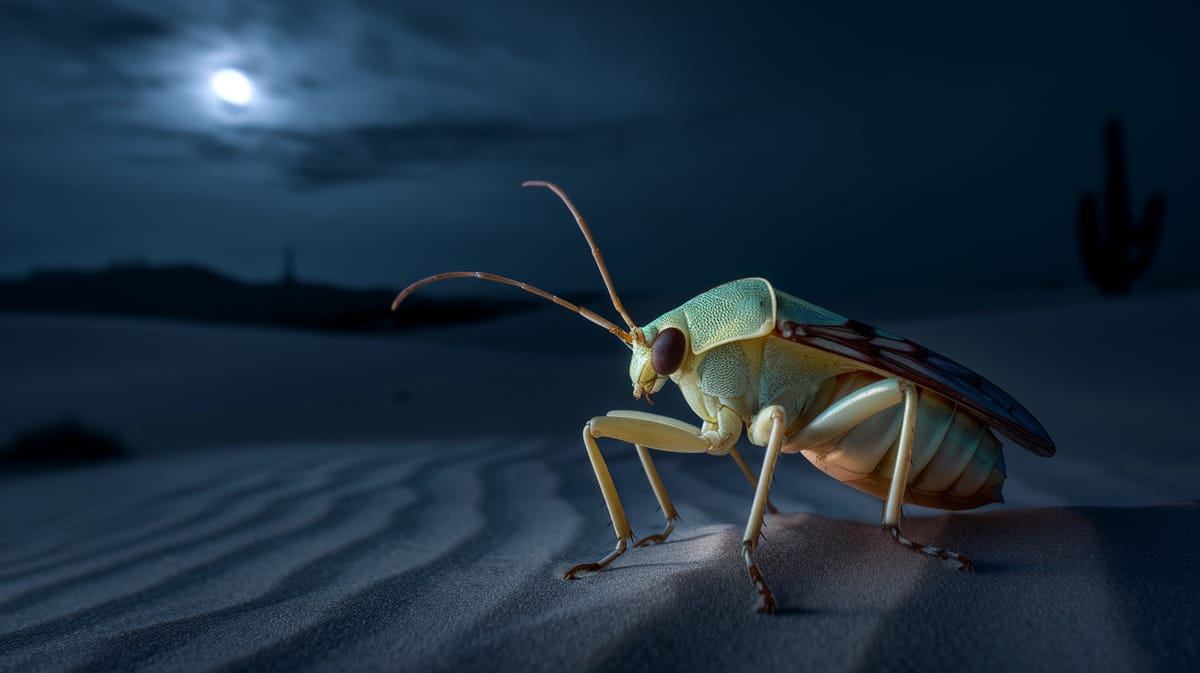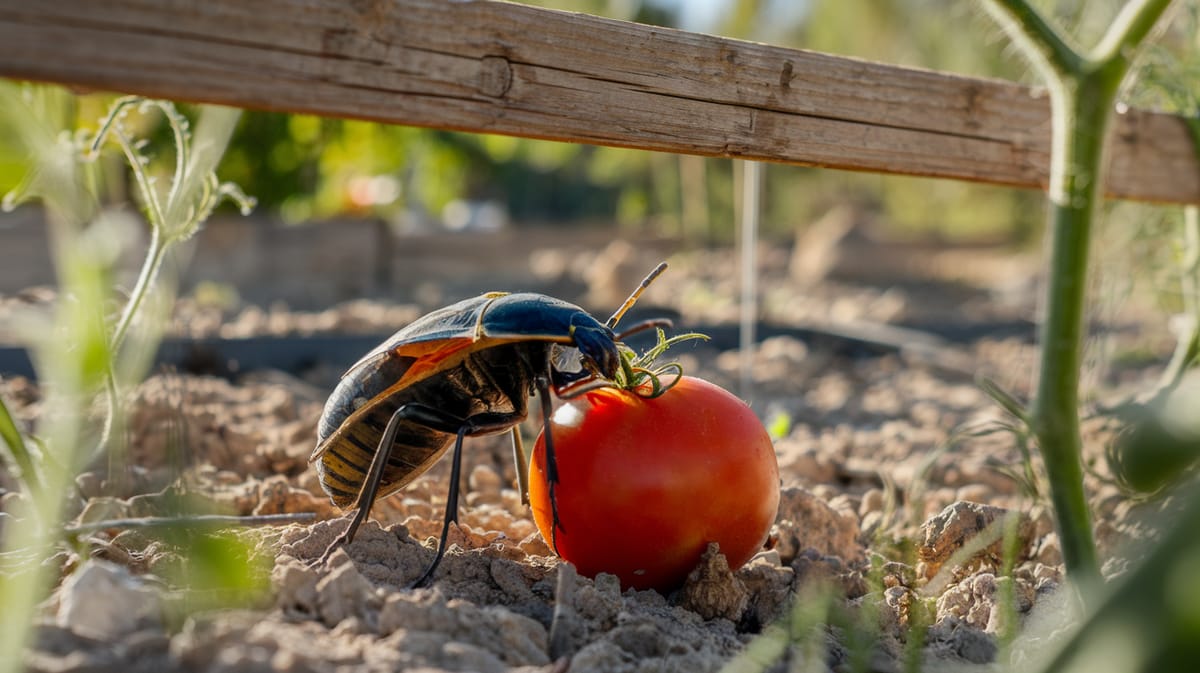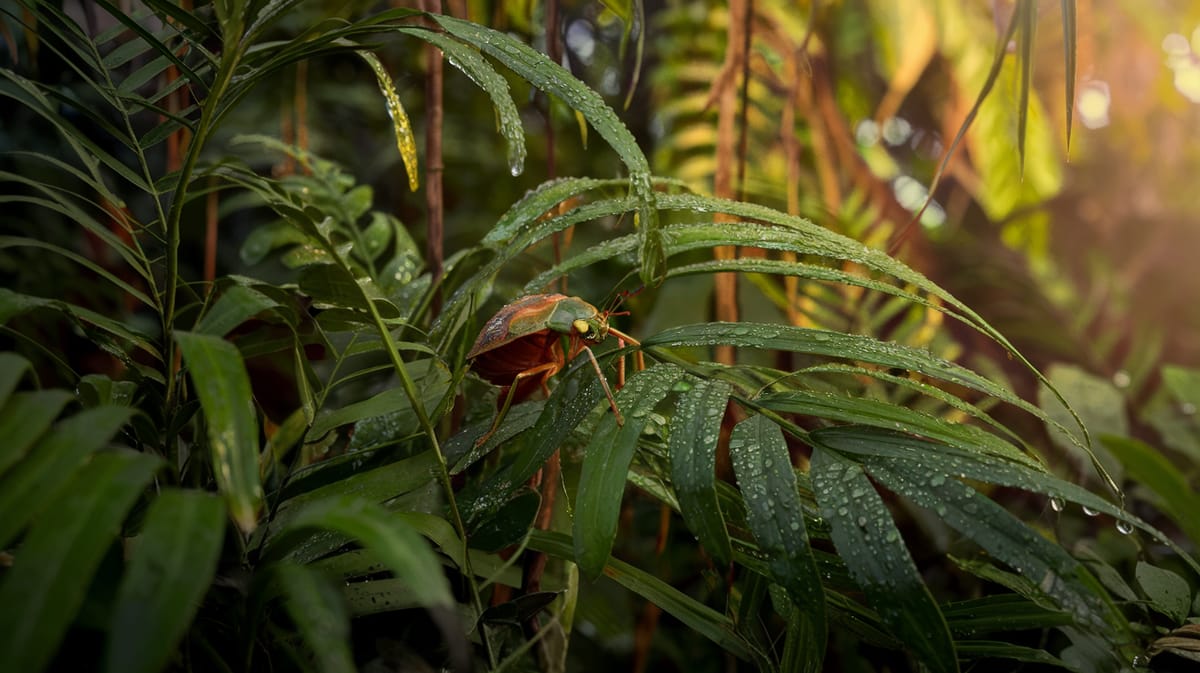Kissing Bug
Blood-feeding expert, the Kissing Bug thrives under the veil of night, silently seeking warm-blooded hosts. Known vector of Chagas disease, it plays a pivotal role in ecosystems.

Key Insights at a Glance
Did You Know?
Taxonomy & Classification
Kissing bugs exhibit specialized adaptations for hematophagy, including elongated mouthparts and stealth behaviors, reflecting their unique evolutionary niche among insects. Let's understand the evolutionary journey and classification of these remarkable parasites.
Species Diversity
Kissing bugs encompass over 130 species within the Triatoma genus, distributed primarily across the Americas, exhibiting varied adaptations to their environments.
Ancient Origins
Originating in the Americas, kissing bugs adapted to blood-feeding about 40 million years ago, surviving significant climatic shifts and ecological changes.
Lifecycle and Growth
A remarkable journey of transformation from Egg to Adult.
Egg
Eggs are laid in clusters, hatching into nymphs after absorbing sufficient moisture from the environment.
Nymph
Nymphs undergo five molts, gradually acquiring adult characteristics like wings and increased size, feeding on blood to fuel growth.
Adult
Adults are fully winged, actively seek hosts for blood meals, and engage in reproduction to sustain populations.
Dietary Habits
A skilled bloodsucker with specialized feeding techniques, this insect targets vertebrates for its meals, adapting to various environments.
| DIET TYPE | DESCRIPTION |
|---|---|
| Primary Diet | Primarily consumes blood from mammals, notably humans and domestic animals, using a specialized proboscis for feeding. |
| Secondary Diet | Occasionally feeds on the blood of birds and reptiles, adapting to availability in different habitats. |
| Occasional | Rarely utilizes plant sap and nectar, displaying flexibility in diet during food scarcity or environmental stress. |

Behaviour and Adaptations
Discover the fascinating adaptations that make the Kissing Bug a skilled nocturnal feeder.
Bloodsucking Efficiency
Specialized mouthparts allow efficient blood extraction from hosts during the night.
Heat Detection
Uses thermal sensors to locate warm-blooded prey with precision.
Stealthy Movement
Moves quietly to avoid waking its sleeping hosts.
Ecosystem Impact
Kissing Bugs play a crucial role in their ecosystem by contributing to balance and biodiversity.
Blood Meal Providers
Serve as a food source for other insects and birds.
Disease Control
Help regulate animal populations by transmitting Trypanosoma cruzi.
Nutrient Recycling
Facilitate nutrient cycling by feeding on blood and returning nutrients to the soil.
Conservation Challenges
Understanding and addressing the major threats to Kissing Bug populations.
Pesticide Use
Chemical pesticides reduce Kissing Bug populations and disrupt their habitats.
Habitat Destruction
Urbanization and agriculture significantly reduce natural habitats for Kissing Bugs.
Climate Variability
Changes in weather patterns affect the distribution and breeding cycles of Kissing Bugs.
Frequently Asked Questions
How long do Kissing Bug live?
Kissing bugs typically live for one to two years. Their lifespan can vary depending on environmental conditions and the availability of food. During this time, they go through several life stages, including egg, nymph, and adult.
What do Kissing Bug eat?
Kissing bugs feed primarily on the blood of vertebrates, including mammals, birds, and reptiles. They are known to bite humans, especially at night, when they seek out blood meals to sustain themselves and support their reproductive cycle.
Are Kissing Bug poisonous?
Kissing bugs themselves are not poisonous; however, they can transmit Trypanosoma cruzi, the parasite that causes Chagas disease. This disease can lead to serious health problems if not treated. It's important to seek medical advice if bitten by a kissing bug.
Are Kissing Bug endangered?
Kissing bugs are not considered endangered. They are widely distributed across the Americas, from the southern United States to Argentina. Their populations are stable, and they thrive in various habitats, including human dwellings, where they can find blood meals.
What do Kissing Bug symbolize?
Kissing bugs do not have a widely recognized symbolic meaning. In some cultures, they may symbolize disease or discomfort due to their association with Chagas disease and their tendency to bite humans while they sleep.
Do Kissing Bug bite?
Yes, kissing bugs bite. They are nocturnal blood-feeding insects that typically bite humans around the mouth or eyes while they sleep. These bites can cause irritation and allergic reactions, and the bugs may transmit Chagas disease through their feces.
What color are Kissing Bug?
Kissing bugs are generally dark brown or black with distinctive orange or red markings along the edges of their bodies. Their coloration can help them blend into their surroundings, making them less noticeable to their hosts.
Does a Kissing Bug have wings?
Yes, adult kissing bugs have wings. They are capable of flying, which enables them to travel in search of food or suitable habitats. Their wings are folded flat over their backs when not in use.
What does a Kissing Bug look like?
Kissing bugs are about 1 to 3 centimeters long, with elongated, flat bodies. They have a cone-shaped head with prominent, forward-pointing antennae, and their mouthparts are adapted for piercing and sucking. They often have orange or red markings on their edges.
Is a Kissing Bug an insect?
Yes, a kissing bug is an insect. It belongs to the order Hemiptera, also known as true bugs. This order includes insects with specialized mouthparts for piercing and sucking, which kissing bugs use to feed on the blood of vertebrates.
Related Insects
Discover insects with similar characteristics to Kissing Bug - including shared habitats, diets, and taxonomic classifications
Share this profile
Help others discover Kissing Bug
